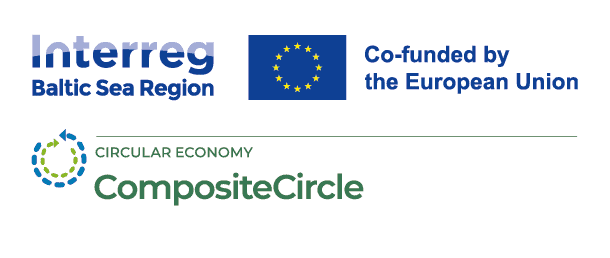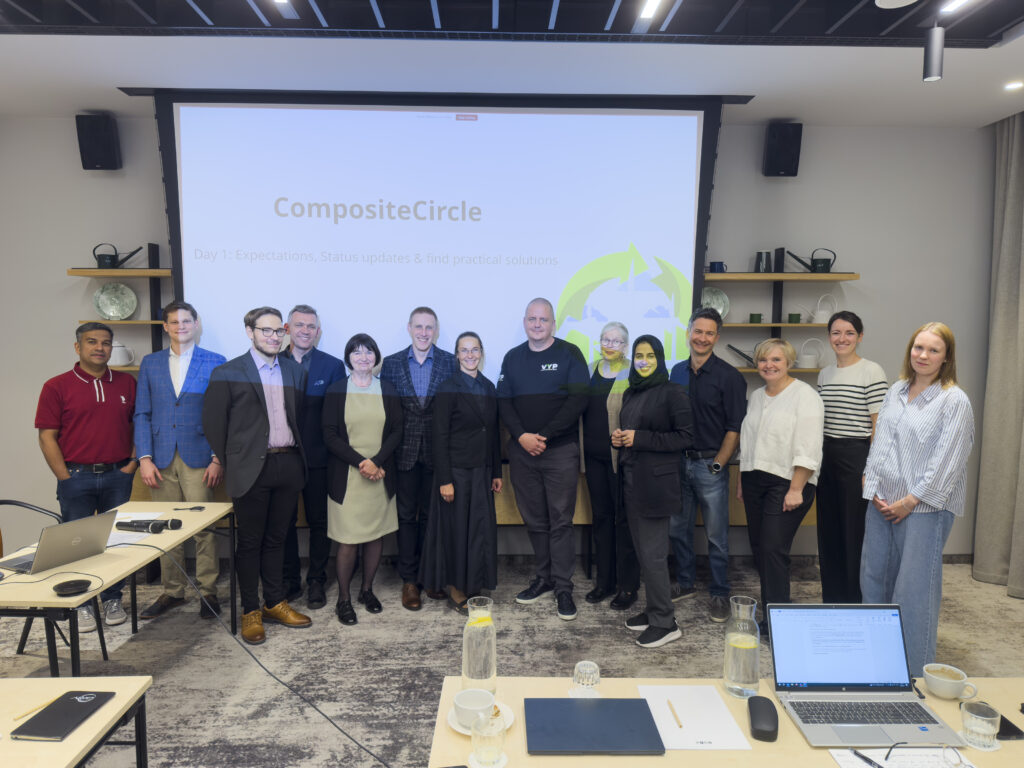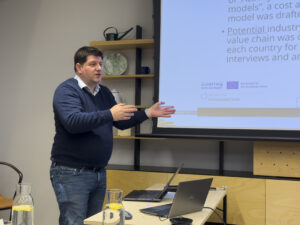
Chemical recycling solutions in focus at Workshop no. 3
03 November 2025
Recycling composite materials remains one of the biggest challenges in the green transition, particularly for wind turbine blades. The CompositeCircle project workshop brought together researchers, companies, and public authorities to explore how technology, regulation, and industry can collaborate to advance sustainable composite recycling.
The main theme of the day was chemical recycling, especially solvolysis – a process that chemically breaks down resin to recover fibres of near-virgin quality. Presentations featured research organisations, companies, and networks from across the Baltic Sea region.
Overview of recycling methods
Aarhus University provided an overview of recycling options for fibre-reinforced composites. Alternatives to landfilling include:
- Mechanical recycling – simple and eco-friendly but produces lower-quality fibres.
- Thermal recycling – methods like pyrolysis better preserve fibre strength.
- Chemical recycling – solvolysis enables almost complete material recovery, though further development and investment are needed for industrial-scale use. Co-processing in cement kilns was highlighted as a mature and economically viable option for GFRP, where resin acts as fuel and mineral content becomes part of the cement clinker.
Regulation and circular economy drivers
The State Environmental Service reviewed EU and national legislation shaping composite recycling, including the Waste Framework Directive and Industrial Emissions Directive. The discussion stressed that evolving regulation, such as landfill bans and dedicated waste codes, could position the EU as a global leader.
Composite United introduced the Ecodesign for Sustainable Products Regulation (ESPR), which promotes sustainable product design. A future digital product passport will improve traceability and recyclability throughout the product lifecycle.
Solvolysis – a promising but evolving solution
VTT and the Danish Technological Institute (DTI) examined solvolysis’ technical maturity and challenges. DTI has applied the method to wind turbine blades and skis, showing significant CO₂ savings compared to landfilling. While not yet economically viable at small scale, automation and process optimisation could change this. Centria shared its own laboratory experiments and insights into industrial applicability.
Industry insights: NOMA Resins and Podcomp
In the company session, NOMA Resins and Podcomp shared their experiences of integrating circular approaches into production. NOMA Resins develops bio-based and recycled-fibre composites that reduce carbon footprints without compromising performance. Podcomp, a Swedish manufacturer of modular building elements, focuses on reusing composite production waste to combine technical quality with transparent sustainability verification.
Technology, economy and regulation – moving forward together
The workshop concluded with a panel discussion on key enablers for composite recycling: technology, economics, regulation, and market demand. Participants agreed on the need for shared business models that link research, industry, and decision-makers while creating incentives to scale up recycling solutions.
Click here for a full report on Workshop 3 (.doc)








